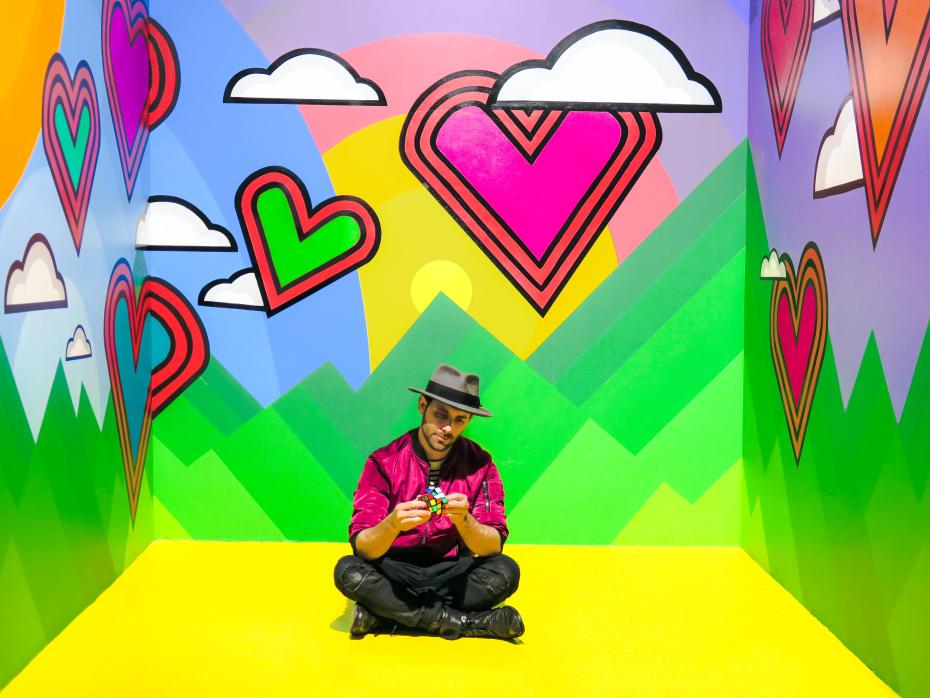
Life beyond Zoom and Teams: students are ready for next gen online spaces
YouTube posts known as gongbang (“study with me”) videos have become surprisingly popular among students during the Covid-19 pandemic. One well-known streamer in South Korea, Kim Dong-Min, posted a video of himself studying in a library that attracted more than 400,000 views. The video shows him sitting at a desk, tapping thoughtfully on his laptop while studying, with ambient “library” noises appearing in the background. Why would anyone want to watch him? To many, it might be akin to watching paint dry.
Many students, however, say that this kind of virtual student-watching is motivating, helping them to focus and feel connected. But will this new phenomenon of watching other students read a textbook for hours persist? Might there be others that students themselves can actively partake in that make them feel more connected to one another and their university?
Our research has been exploring the opportunities, benefits and challenges of creating a new generation of virtual worlds that can provide a 24/7 presence for students to inhabit and adapt to their wants and needs. We discovered that, without the ability to access the physical campus and interact, new joiners felt they were missing out on the opportunity to reach out to others.
As we look forward to a post-pandemic world, many of us are beginning to reflect on what we can keep from our enforced year of online learning and teaching. It has been suggested that there is a lot to be gained from continuing some activities online.
However, it is also recognised that when large numbers of students attend a virtual event, it feels like they are less engaged – hardly anyone speaks up or asks questions, and the norm is for students to keep their cameras off. They know this makes the class less engaging, but they also point out that turning their cameras on makes them too self-conscious.
In contrast, once back in the physical world, students and staff will be only too glad to see each other again in person. However, it could be that they then miss some of what they had in the virtual world.
Last year, UCL set up “virtual common rooms” (VCRs) in MS Teams to provide students with a digital “extension” of their department and a space for connection. The students who used them commented that such spaces helped them to meet others and drop in on their lecturers outside of classes.
The key to successful VCRs appeared to be the presence of a dedicated social committee that, like in the physical world, took responsibility for keeping members engaged and planning and publicising regular events for members to attend. Some students mentioned a desire for a 24/7 virtual space where they could hang out and study with each other. But the current generation of Zoom, Google Hangouts, Teams, Slack and other “office-based” remote comms tools simply don’t cut the mustard.
This is where a newer generation of virtual spaces, that extend beyond Gather.Town, might be able to fill the gap. They can provide richer visual and audio spaces that can be designed to be fantasy, fun or funky but also more inclusive for disabled staff and students.
Students create their own avatars upon joining, so they don’t have to show their faces, and they can move around different spaces – just like in Fortnite and other social worlds. They offer scope for persistent engagement, serendipitous meetings and personalisation, creating a sense of community and connecting students across different disciplines and programmes – provided they are designed well.
During lockdown, some of the existing 2D and 3D worlds were experimented with at UCL, with some degree of success. However, after the initial flurry of interest, many experienced a sharp decline in usage. To ensure the success of VCRs or other online rooms, “champions” are required to manage the space, along with a critical mass to keep using them in order to make others feel like they are worth repeat visits – just like students like to hang out, study and “student watch” in a busy cafe rather than sit in a deserted one.
In a nutshell, these spaces need to be designed for the Insta, Tik-Tok generation, not adapted from tools developed for the business world. Clearly, they are not there yet, but in the future there may be a number of benefits to being able to connect in a new form of virtual world, especially when away from campus or for those who have accessibility needs.
At the very least, the next generation of software comms platforms need to keep up with the times and be easy to adapt. Just like background images, which don’t take long to feel old, 3D virtual worlds quickly pass their sell-by date. As one student noted, Sococo (an online 3D virtual workplace) is “dated” in its appearance and feels “like a joke” or “an old video game”.
If these virtual worlds are to take off and are to provide a new sense of connected community, they need a facelift. They need to be lightweight, light-hearted and, perhaps most importantly, student-designed, student-desired and student-owned. StudyStream (a platform launched in the UK in late 2020) is one such in the making. Let’s see what else is lurking around the corner in the 3D virtual world.
Yvonne Rogers is professor of interaction design at UCL and director of the UCL Interaction Centre. Paola Lettieri is professor of chemical engineering at UCL and director of UCL East (UCL’s new campus on the Queen Elizabeth Olympic Park). Ben Meunier is director of operations in UCL library services and secretary of the LIBER (Association of European Research Libraries) architecture working group.

